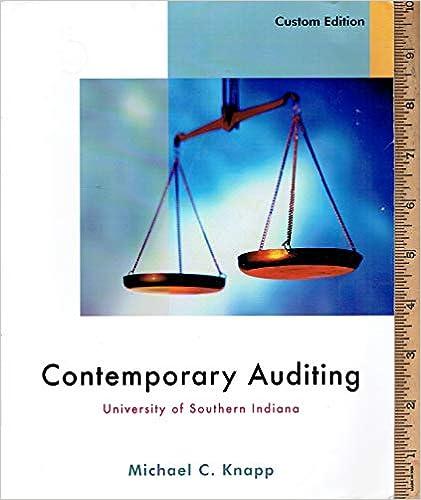Question
Stecyk Shoe Co. produces and sells an excellent-quality walking shoe. After production, the shoes are distributed to 20 warehouses around the country. Each warehouse services
Stecyk Shoe Co. produces and sells an excellent-quality walking shoe. After production, the shoes are distributed to 20 warehouses around the country. Each warehouse services approximately 100 stores in its region. Stecyk uses an EOQ model to determine the number of pairs of shoes to order for each warehouse from the factory. Annual demand for Warehouse OR2 is approximately 144,000 pairs of shoes. The ordering cost is $275 per order. The annual carrying cost of a pair of shoes is $2.20 per pair.
Read the requirements1.
Requirement 1. Use the EOQ2 model to determine the optimal number of pairs of shoes per order.Begin by selecting the formula used to calculate EOQ.
(D=Demand in units for one year, P=Ordering cost per purchase order,C=Carrying cost of one unit in stock,Q=Any order quantity.)
ModifyingAbove EOQ equals StartRoot StartFraction 2 DP Over Upper C EndFraction EndRoot With Subscript EOQ=2DPC
| The optimal number of pairs of shoes per order is | 6,000 | pair. |
Requirement 2. Assume each month consists of approximately 4 weeks. If it takes 1 week to receive an order, at what point should warehouse OR2 reorder shoes?
Determine the formula used to calculate the reorder point for reordering shoes in warehouse OR2, then calculate the reorder point.
| Demand per week | Purchasing lead time (wks) | = | Reorder point | ||
| 3,000 | 1 | = | 3,000 | pairs | |
Requirement 3. Although OR2's average weekly demand is 3,000 pairs of shoes (144,000 12 months 4 weeks), demand each week may vary with the following probability distribution:
| Total demand for 1 week | 2,200 pairs | 2,550 pairs | 3,000 pairs | 3,290 pairs | 3,540 pairs |
|---|---|---|---|---|---|
| Probability (sums to 1.00) | 0.02 | 0.10 | 0.76 | 0.10 | 0.02 |
If a store wants shoes and OR2 has none in stock, OR2 can "rush" them to the store at an additional cost of $3
per pair. How much safety stock should Warehouse OR2 hold? How will this affect the reorder point and reorder quantity?
| The relevant total stockout and carrying costs are the | (1) lowest | when a safety stock of |
| pairs | ||
| of shoes is maintained. Therefore, Warehouse OR2 | (2) | hold that number as safety stock. | ||||
| This will | (3) | the reorder point to |
| pairs of shoes. The reorder quantity will | ||
| (4) | ||||||
1: Requirements
1. Use the EOQ model to determine the optimal number of pairs of shoes per order.
2. Assume each month consists of approximately 4 weeks. If it takes 1 week to receive an order, at what point should warehouse OR2 reorder shoes?
3. Although OR2's average weekly demand is 3,000 pairs of shoes (144,000 12 months 4 weeks), demand each week may vary with the following probability distribution:
| Total demand for 1 week | 2,200 pairs | 2,550 pairs | 3,000 pairs | 3,290 pairs | 3,540 pairs |
|---|---|---|---|---|---|
| Probability (sums to 1.00) | 0.02 | 0.10 | 0.76 | 0.10 | 0.02 |
If a store wants shoes and OR2 has none in stock, OR2 can "rush" them to the store at an additional cost of $3
per pair. How much safety stock should Warehouse OR2 hold? How will this affect the reorder point and reorder quantity?
Step by Step Solution
There are 3 Steps involved in it
Step: 1

Get Instant Access to Expert-Tailored Solutions
See step-by-step solutions with expert insights and AI powered tools for academic success
Step: 2

Step: 3

Ace Your Homework with AI
Get the answers you need in no time with our AI-driven, step-by-step assistance
Get Started


